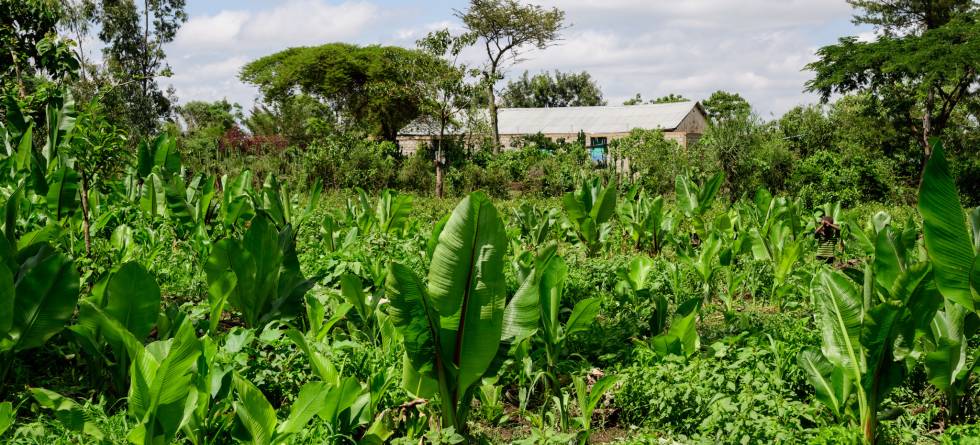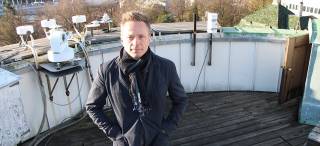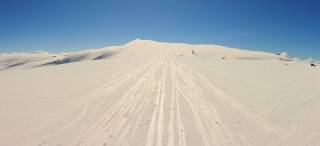By Andreas Graven, kommunikasjonsrådgiver i NORCE
The agriculture in East Africa is mainly rain-fed with little or no irrigation. Farmers and smallholders are highly dependent on rainfall and have no reserves to draw on in dry periods.
This means that advance knowledge of the rainy season is extremely important in this region.
– Better information about how expected rainfall amounts is a crucial factor for the success of the crops. But this information is also important for hydropower producers in countries like Kenya and Tanzania, where hydro is a key component of the energy mix, who need to make plans ahead in time to enhance production and reduce downstream flooding, says climate scientist Erik Kolstad at NORCE and the Bjerknes Centre for Climate Research.
Kolstad will lead the new Horizon 2020 project CONFER, with a budget of €7 million.
The project starts in September, and soon after that Kolstad and his colleagues will travel to Nairobi to meet with the other partners in the 3.5-year project.
Reducing climate risk
CONFER is a multinational collaborative effort with the following partners:
The Norwegian Refugee Council (Norway), the Norwegian Computing Center (Norway), ICPAC (Kenya), Kenya Red Cross Society (Kenya), the University of Cape Town (South Africa), the University of Leeds (UK), the Met Office (UK), and the Karslruhe Institute of Technology (Germany). Together, the partners aim to come up with new solutions to make East Africa more resilient to climate change.
– In this region, climate forecasts have a more direct influence on daily life and human health than in Norway. We will focus on the rainy seasons, which largely govern the rhythm of life and the level of food security, says Kolstad.
The Kenyan main partner, ICPAC, have already issued seasonal forecasts for the region for many years, and the project aims to help improve the accuracy and regional detail of these.
As project coordinator, NORCE has over time built expertise in climate risk and climate prediction.
The experiences from the research project entitled Seasonal Forecasting Engine, which develops seasonal forecasts for Norway, have also led to a large proposal for a new research centre on climate risk, Climate Futures. In June, the Research Council of Norway will announce the new centres for research-based innovation.
Co-production is key
The work in CONFER is strongly founded on co-production principles, meaning that the researchers base their research and development of new climate services on two-way dialogue with the people and organizations that will use them.
– In parallel with the work on improving the climate models, we will establish a dialogue and cooperation with farmers, NGOs and hydropower producers. It will be important to have a strong local presence. One key lesson learnt from our work on climate prediction and adaptation in Norway is that we cannot just present data to the users in the form that we think is suitable. We have to work with them to uncover what information they really need, and how they need it to be presented, says Kolstad.
An important deliverable is new services and early warning systems.
– This could be services for mobile phones with information and forecasts for use in planning by farmers and energy producers, and maybe also early warnings to help aid organizations such as Red Cross and Red Crescent prepare for and mitigate the impacts of extreme weather events.
Big data
To enhance the quality of the seasonal forecasts in the region, the researchers will use statistical modelling and machine learning, merging data from climate models, satellite data and observations. The statistical modelling will be led by the Norwegian Computing Center, which has worked with NORCE on other initiatives, including Seasonal Forecasting Engine and Climate Futures.
– Incredible amounts of data exist, but sadly, a lot of it is not being used. In addition to our new climate modelling activities, much of the work will revolve around integrating existing forecasts with observational data. One aim is to replace subjective choices, for instance when it comes to which data to use, with more objective methods, Kolstad says.
NORCE climate scientist Stefan Sobolowski will lead the climate modelling work in CONFER, one of the areas where NORCE and the Bjerknes Centre are among the world-leading research groups.



